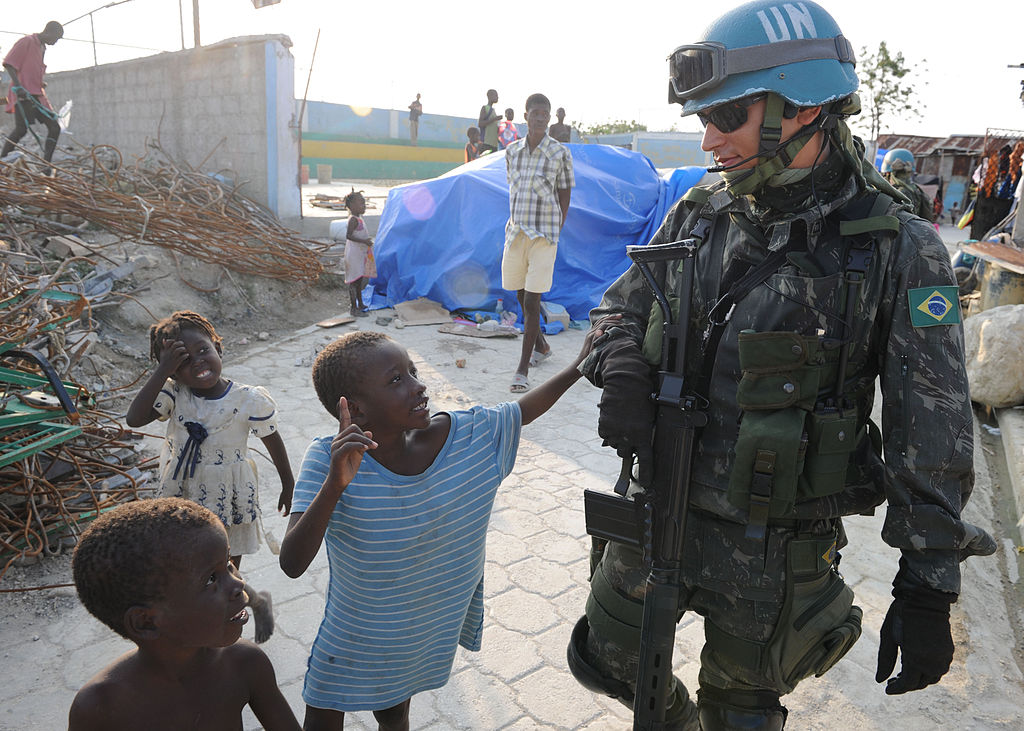A new research paper published by Chatham House for the Moving Energy Initiative highlights the lack of renewable energy adoption in humanitarian aid projects. In fact, according to the authors, aid projects' energy policies can be considered “inefficient and wasteful.”
Aside from environmental considerations, the report stresses the beneficial financial aspects of adopting renewables. Backing up earlier, seperate reports, it finds that switching to the use of currently available low carbon technologies could save the sector around half a billion US dollars per year.
“In almost every humanitarian situation in which a diesel generator is in operation, there is a cost case (as well as an environmental one) for the hybridization or solarization of the energy infrastructure. At a time of significant budget pressure for many actors in the humanitarian system, agencies should seriously examine the potential of new energy solutions to reduce costs, create new opportunities for vulnerable people, and leave legacy assets for the host community,” said co-author Owen Grafham.
Best practice
The authors refer to best practice examples in refugee camps in Jordan, as an example. By adopting a strategy of higher-efficiency vehicles, around 10% of fuel costs could be saved, they say. Moreover, 60% of the current fuel costs could be saved by deploying new generation technologies. Overall, at current prices, operational savings of $517 million per year for the humanitarian sector are likely. This would be equal to 5% of the UNHCR’s funding gap for 2017 states the report.
Diesel-fuelled electricity generation is subject to volatile fuel prices, and immense transportation costs. As humanitarian aid camps are often located in remote and inaccessible regions, the act of transporting diesel fuels to the gensets is adding substantial operational costs.
The World Food Programme (WFP) estimates that UN aid facilities, on average, pay around $0.60 per kWh for electricity, compared to households in the U.K. which are estimated to pay around $0.20 per kWh. Prices are even less in China or the United States.
Co-author Glada Lahn commented, “Energy is essential to humanitarian response. Most refugee and internal displacement camps are in remote locations, so relief efforts consume large amounts of fuel on the long-distance transport of staff, equipment, and goods such as food and water. Operations tend to rely on on-site generators to power reception centers, clinics, schools, food storage, and water pumping.”
Successful implementation
The report provides a range of case studies where UN bodies have successfully utilized modern low-carbon technologies to save costs. For example, the World Food Programme (WFP) runs a food storage facility in Herat, Afghanistan.
Maintaining the facility costs $212,324 per year, most of which goes on acquiring diesel. In efforts to slash costs, the WFP installed a hybrid wind, solar, diesel genset. Not only did the new system significantly reduce reliance on fuel, but payback on the initial investment is expected to be achieved after 5.2 years, while over the operational lifetime – 15 years – savings of up to $900,000 are expected.
Slow on the uptake
Reportedly, the humanitarian aid sector is slow to adopt new energy technologies as it is confined in a “diesel mindset.” Because the objectives of humanitarian missions differ from those which seek to make an environmental impact, questions of energy efficiency and renewable energy are often not on project leaders’ minds (despite the link between humanitarian crises and environmental conditions like drought). This is shown by the scarce data available and the relatively poor monitoring and reporting by aid organizations on their energy consumption.
However, with new technological advancements, system prices have dropped significantly. A PV system nowadays costs almost a quarter of what it used to cost in 2009; this is set to fall by another 66% by 2040, the authors claim.
Despite the prospect of cutting energy bills in half, as a study examining refugee camps in Kenya, Jordan and Turkey projected, the humanitarian aid sector continues to maintain a position that solar is impractical, due to the lifetime of the panels. The authors, by contrast, say that the average lifetime of a refugee camp is 18 years, making solar a viable option.
A remedy to the gap between what is technically feasible and reasonable, and what technologies are deployed in the field could be the establishment of a UN utility, the authors state. There are, however, a range of financial and operational obstacles to overcome, as UN bodies are not able to access commercial debt, for example. Additionally, the authors raise doubts about whether the UN could match the expertise of commercial utilities.
It's been said before
In September, pv magazine editor Emiliano Bellini reported on the potential of solar to foster peace and aid conflict resolution. Electricity is one of the highest costs for humanitarian missions in fragile regions, such as South Sudan, the Congo, Somalia, Myanmar and Yemen, among others. In an interview, CEO and founder of Energy Peace Partners describes how solar installed in camps and protected areas, could improve the outcomes of such missions.
This content is protected by copyright and may not be reused. If you want to cooperate with us and would like to reuse some of our content, please contact: editors@pv-magazine.com.




“The humanitarian aid sector continues to maintain a position that solar is impractical, due to the lifetime of the panels.” This makes no sense. If the panels last longer than than the aid mission, they can be packed up and stored for the next one. Or sold off as working systems to local entrepreneurs or given to cooperatives, which helps create a longer-term legacy.